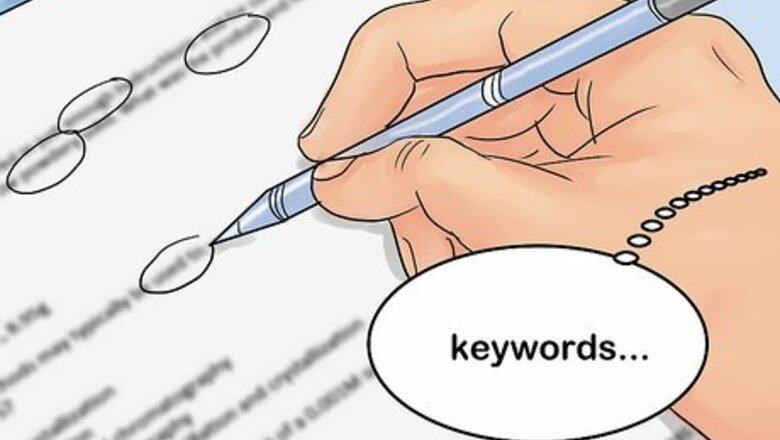
views
Short Answer Questions
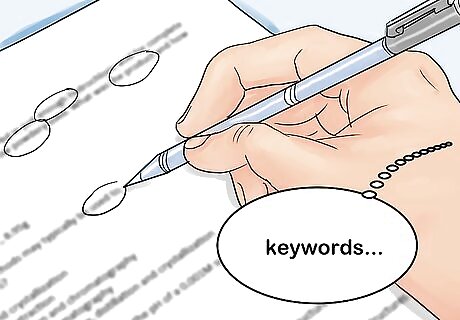
Circle keywords in the question. This will help you focus on the main idea the instructor wants you to recall. Look for any vocabulary words you learned recently in class, and any study terms you recognize. Some teachers like to reuse test sheets for other classes, especially if you are answering on a scantron. In this case, use pencil. You don't have to circle the words; you can underline them instead.
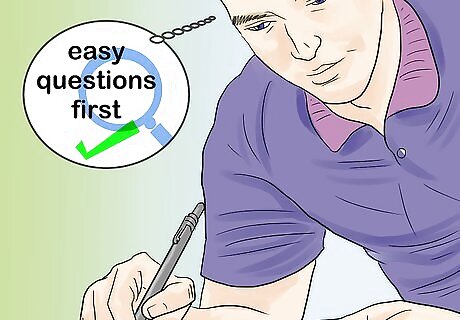
Answer easy questions first. Quickly go through the test and fill in the blanks that you are sure you know. This will give you confidence, and it will “prime” your brain – you'll be subconsciously working on the answers you skipped over. Then go back and answer the hard questions. Another reason you want to answer the easy questions first is to get them out of the way. This way, if you run out of time, at least you'll have a bunch of questions answered.
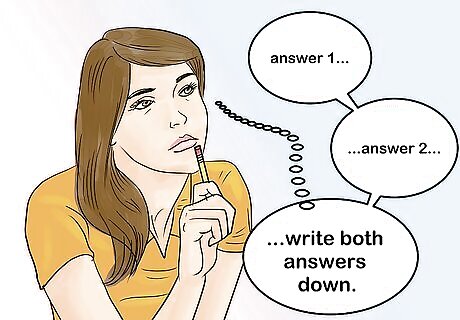
Supply more than one answer, if you aren't sure. If you have more than one idea, and you truly can't decide which is more likely to be correct, write them both down. Your teacher may give you partial credit if one of your answers is correct. This won't always be the case, especially if it is a multiple choice question or a scantron.
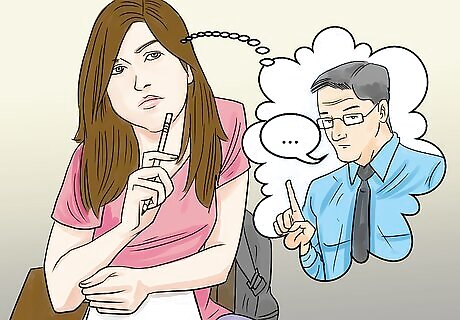
Answer from your teacher's point of view. If you can't decide between two possible responses to a question, try to think of it from the teacher's point of view. What would they most likely want you to say? What sort of things did they most often emphasize in class lectures? Imagine the teacher is reviewing the test results in class, later on. Try to picture what your teacher would give as the answer. Imagine that you are writing the test. What sort of answers would you put as the correct and incorrect ones? This is helpful for multiple choice questions.
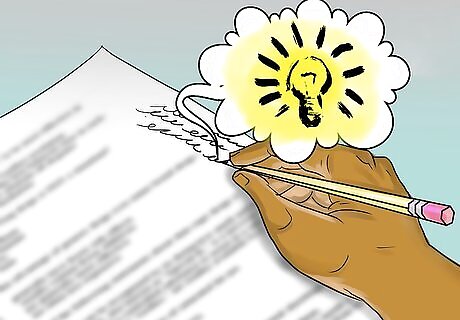
Use the margins. If you are having difficulty figuring out the answer to a question, or if you have several possibilities in mind, use the margins (or the back) of your exam to work it out. Write down anything that comes to you, and see if this jogs your memory. Some teachers allow you to bring a scrap sheet of paper to the exam. If your teacher lets you do this, take advantage of it.
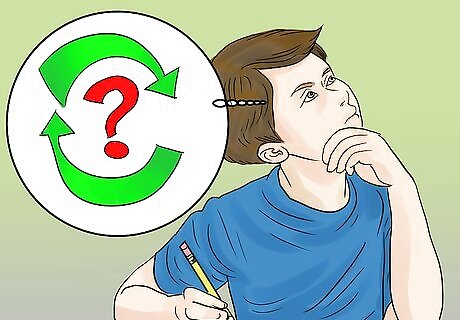
Rephrase the question. Summarize the question using your own words, to see whether this makes the instructors' point more clear. Be careful not to change the question when you rephrase it.
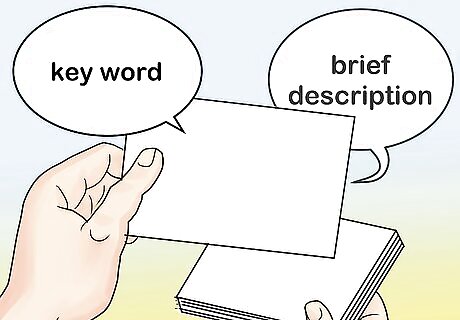
Prepare and study with flashcards. If you know your teacher will be giving you a short answer test, prepare beforehand by making note of any key ideas or terms you find in the text book or reading materials. Always include key points your teacher makes in his or her lectures, especially points that are repeated two or more times. Write the key word on the front of the flashcard, and a brief description on the back. Alternatively, write the key terms on the left side of a sheet of paper, and the definitions on the right side. Fold the paper so you can only see the definitions, then try to recall the terms.
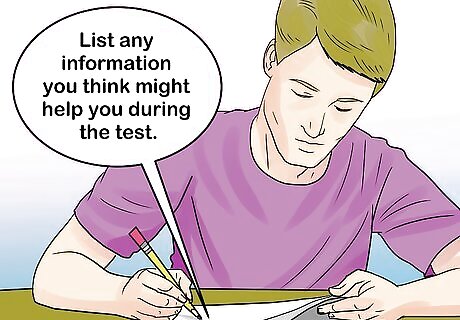
Write as much as you can remember on the back of the test. Briefly read through the test questions. Then, if you are allowed to write on the back of the test sheet, or on a cover sheet, try to list any information you think might help you during the test. List any of the terms on your flashcards that often stumped you – get those down, so you don't get stuck on them when they appear on the test. If you memorized any lists or collections of terms by using mnemonics, quickly write them down. If you aren't allowed to use the Periodic Table during a chemistry exam, memorize it and sketch it out before you take the test. Then you'll have it to refer to during the test. Always be sure your teacher is okay with this method, and that it is obvious you didn't bring the paper in with you to class – otherwise, it might look like you're cheating.
Essay Questions
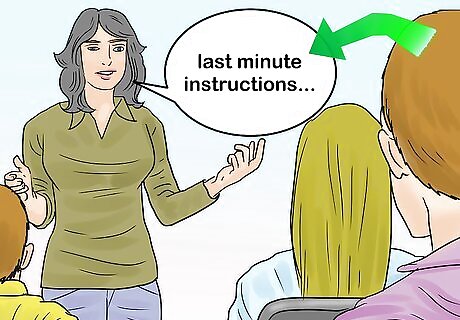
Listen to all the instructions. Be sure to pay attention when your teacher gives the last minute instructions, in case there is anything different about this test than others you have taken. Also make note of how much time you will have to take the test.
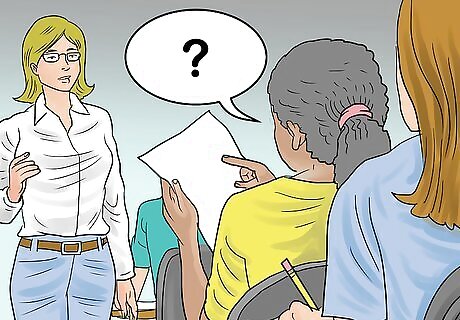
Read the questions, and ask for clarification. As the exams are being handed out, quickly skim through the questions to be sure they all make sense to you. If there is anything that isn't clear, ask your professor to explain more fully what he or she is looking for on that question. Your teacher may not always notice you raising your hand during a test. In this case, you can try going up to them and asking them.
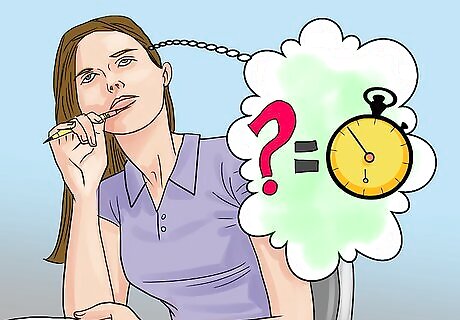
Estimate time allowed for each question. If there are multiple essay questions on the exam, count them and divide this number into the total amount of minutes you are allowed to use for the test. This will give you an estimate of how much time you should be spending on each question. For example: if you have 1 hour to answer 3 essays, spend 15 to 20 minutes on each essay.

Avoid getting stuck. If you notice that you are stuck on one particular question, or spending too much time on a really detailed answer, go to the next question. Go back at the end of the test to fill in anything you missed. If you spend too much time on one question, you may run out of time to answer the rest. Sometimes if you skip a question and continue to work through the test, you will jog your memory and remember the answer to the earlier question.

Rephrase the question to begin your answer. To come up with a thesis statement or central point for your answer, rephrase the question as a statement. This will give you a good starting point for your essay. Try to include key words from the question in your thesis statement.

Plan your answer before you begin. Outline the main points you want to cover, before you begin writing. Include the main terms, dates, names – anything that you can remember – when jotting down your notes. Then include only the most relevant data when writing your answer. Use scrap paper, or the back of the paper, if you need more space.

Keep your answer simple and concise. Stay on point, and try to use clear language to express your ideas. Avoid lengthy introductory or summation passages. Include your most important points first – don't save them for the conclusion of your essay. Realize that providing too long of an answer can actually cause you to write too much. It can end up in taking away the focus on the correct answer, causing you to get it wrong, or losing some marks.
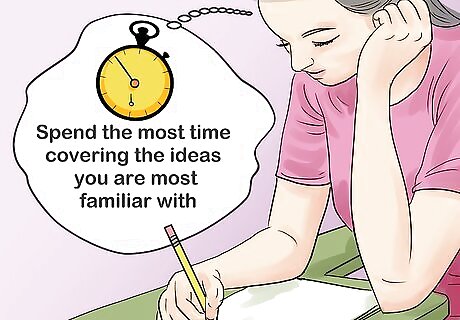
Focus on the parts you are most familiar with. Spend the most time covering the ideas you are most familiar with, and that you remember the most details about. Answer the question completely, but devote the bulk of your essay answer to the part of the question that you are most confident you understand.
Multiple Choice Questions
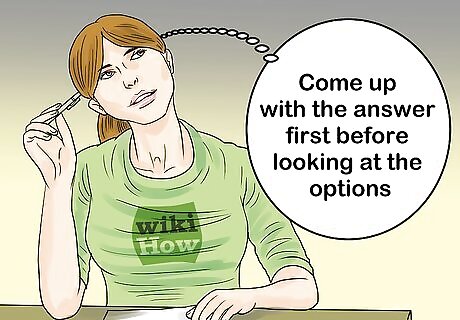
Come up with your own answer, before reading the options. Try to answer the question in your own words if you can, then try to find the answer that most closely matches your idea. If you focus first on figuring out what the answer is, before looking at the options given, it will force you to where you first heard this information. This process helps to improve your concentration, and will exercise your memory.
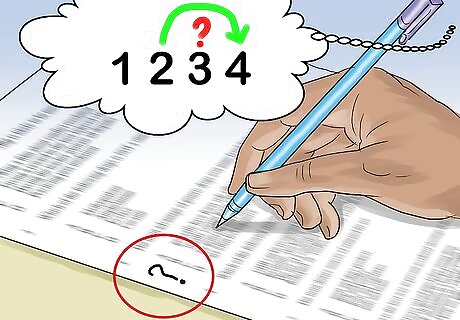
Answer questions in order, but skip any that you get stuck on. The answers on an exam often follow the same order you learned the material in class, or in the same order it was presented in the textbook. Answering them in order may help give you clues as to what the right answer might be. But don't waste a lot of time on a difficult question and become frustrated, as this may affect your performance on the rest of the test. If you are really stuck on a question, make your best guess and put a question mark next to it (online tests may allow you to flag questions). If you finish the test with time to spare, go back and reconsider the ones you marked. If you do not want to guess, skip the question and put a mark beside it, so you can return to it if you have time at the end of the test.
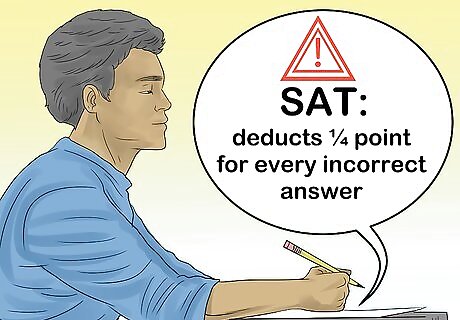
Find out whether you will be penalized for guessing. On most tests, you are not penalized for guessing. It's better to risk getting a question right, and possibly get it wrong, than to leave it completely blank, and definitely get it wrong. However, be aware that there are certain tests where you are penalized for guessing. If you aren't sure, ask your teacher or exam coordinator before you begin the test. The SAT will penalize you for guessing. This was changed in 2016. Prior, 1/4 points were deducted point for every incorrect answer – you were not penalized for answers left blank. The ACT does not penalize for guessing. It's better to answer every single question, if you can, and hope that some of your guesses are correct. The GRE does not penalize for wrong answers. Skip answers when you are stuck, but try to get back to them if you can – it's best to answer every question you can, within the allotted time frame.

Forget about always sticking to your first choice. Many people say that your first guess on a test question is usually right, so you should never change your answer. However, recent studies have shown that isn't the case – you're just as likely, or even more likely, to get it right if you change an answer you aren't sure about. So don't stress over whether to change an answer because it wasn't your first choice. If you change your mind, change your answer. Empirical evidence from data collected from takers of the GRE test shows that test-takers who changed some of their answers tended to score higher than those who always stuck with their first choice. Test takers in the GRE study most often changed answers from wrong to right, which resulted in a higher score.
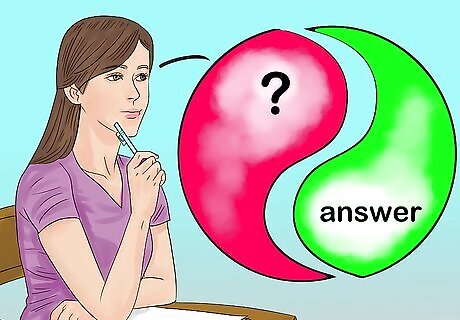
Ask yourself if the answer is complete. When you are considering an answer that you aren't sure is correct, ask yourself if it completely answers the question. If the answer is only partly true, or applies to only one part of the question, it is probably not the one to choose. If the answer is only true under certain conditions, it is probably not the right one. If a question asks about a specific behavior of an elephant, but the answer would only be correct for an elephant in captivity, it doesn't exactly answer the question. If an answer is incomplete, or is not correct under every circumstance, eliminate that option. This will leave you with fewer options to choose from, which will increase the odds that you will select the correct answer. If you find an answer that looks “almost” complete, see if there is another option that is very similar to that answer, but is complete. This may be the correct choice.
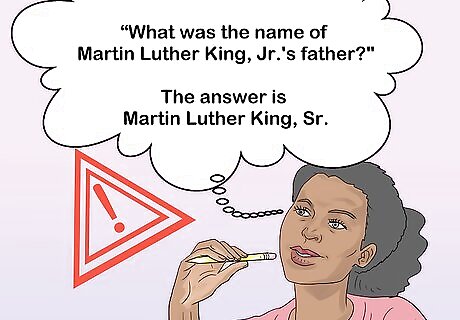
Think twice if you suspect a trick question. Teachers very rarely put trick questions on their tests. If you think the question might be a trick, read it over again very carefully. You might have misunderstood the point of the question, or you might be trying to make the question more complicated than it really is. If there is a simple answer that solves the question, that is probably the correct choice. For example, if the question is “What does 0 times 0 equal?,” don't over-analyze it. It's not a trick question – the answer is 0. If a history tests asks, “What was the name of Martin Luther King, Jr.'s father?,” it's not a trick. The answer is Martin Luther King, Sr.
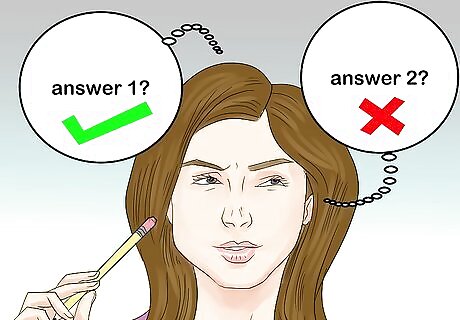
Visualize each answer as being correct. If there are two answers you like equally, visualize the first one as being the right answer. Then try the second option, and imagine in your mind that this answer is the correct one. You will probably have a “gut feeling” that one of the answers is wrong. Then choose the other one. We sometimes have a strong feeling about something, without remembering specific details about it. For instance, we can remember if we liked or disliked somebody we recently met, even if we can't remember their name.
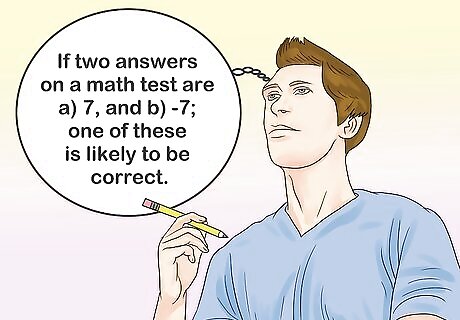
Look for exact opposites. If two of the choices are exact opposites of the other, one of these is likely to be the right answer. If two answers on a math test are a) 7, and b) -7; one of these is likely to be correct. For example, a question on a history exam asks about the impact of the Voting Rights Act of 1965, and two of the answers are: a) It allowed more citizens to vote, and b) It increased voting restrictions. These express exactly opposing ideas, and in this case “A” is the correct answer.

Reject absolutes. If an answer insists on an absolute, it is usually not the correct answer. Avoid answers that include the words never, always, all, every, and must. (Math tests are the exception to this one.) Answers that do not contain absolutes are more likely to be correct. For example, correct answers often contain these words or phrases: generally, probably, most likely, seldom, tend to, and usually.

Look for grammatical clues. Be on the lookout for grammatical matches between the question and the answers. The correct answer to a question will most likely match in tense and number, and the nouns and verbs will agree. For example, if the question asks, “What IS the most endangered species in the world?,” you can eliminate “The Amur leopard and the Javan rhinoceros ARE the most endangered species,” because the question is phrased in the singular. (In this case, the answer would be, “The Ivory-billed woodpecker IS the most endangered species.)
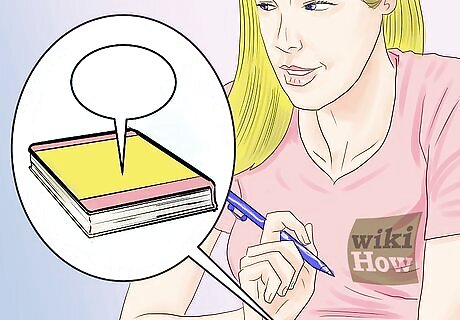
Pay special attention to specific phrases or unusual words that you remember reading in the textbook. Questions for tests are usually based on the information in your textbook, and teachers often use the same words and phrases the book does. Underline any answer that contains specific phrases from the lecture or textbook, and consider those answers more seriously than the others.
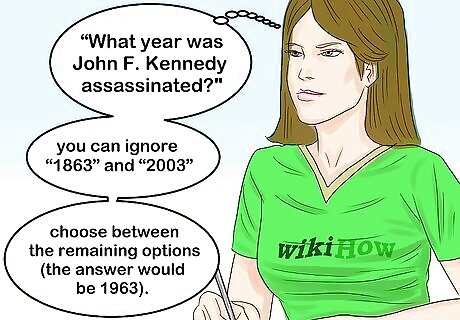
Eliminate answers that are extremes. Often, there will be one answer that is obviously too large, and one that is clearly too small; or a date that is way too early or far too recent. You can toss these out, and choose between the remaining answers. For example, if a question on your history test reads, “What year was John F. Kennedy assassinated?,” you can ignore “1863” and “2003,” because those are clearly outside the correct timeframe. Then choose between the remaining options (in this case, the answer would be 1963). If a math question reads, “What does 4 squared equal?,” you could easily eliminate “2” as being too small, and “200” as being too large. Then choose from the remaining answers (in this case, 16).
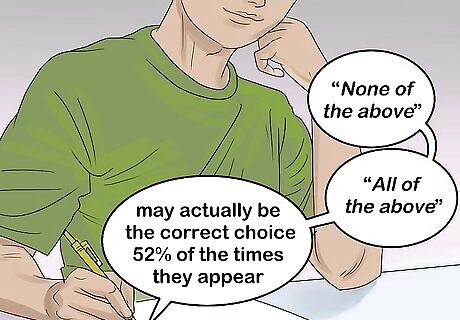
Consider “None of the above” and “All of the above.” These choices are the exception to the rule about absolutes, as they may actually be the correct choice as much as 52% of the times they appear.

Try choosing the longest answer. Often, the choice that contains the most words is correct, because the teacher needs to include a large number of qualifiers to ensure that the answer can't be contested. The teacher may not take the time to phrase incorrect answers in quite such specific terms. For example, imagine a driving test with this question: “If you want to turn right, you should be in:” The answers given are: a) The left lane, b) The lane that's nearest the direction you want to turn, c) the right lane, d) the center lane. The test maker has been most careful in phrasing (correct) option b, to make sure that this answer can't be disputed. Qualifying phrases might include over a period of time, in rare cases, orwithin a small segment of the population. At the same time, sometimes longer answers can be a trick to try to get you to pick the more elaborate sounding suggestion. Use your best judgment and realize that this strategy isn't a sure thing.
True/False Questions
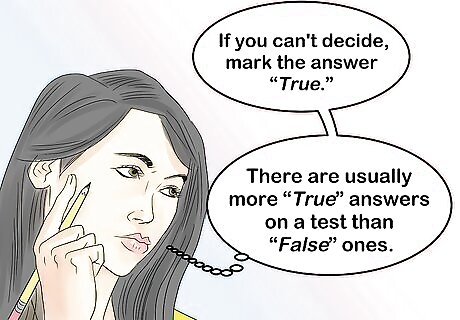
Choose “True” answers over “False. If you can't decide, mark the answer “True.” Teachers usually find it difficult to make a false statement sound like it's true. Therefore, there are usually more “True” answers on a test than “False” ones.
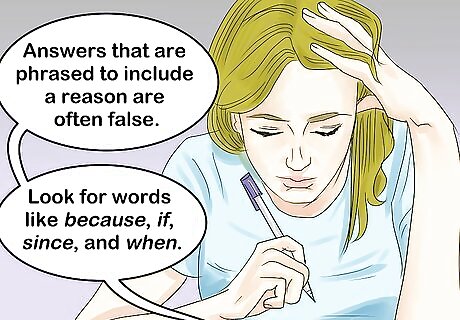
Examine every part of an answer that includes a reason. Answers that are phrased to include a reason are often false. The first part of the answer might be true, but then the teacher will add a modifier that is incorrect or incomplete. This makes the entire statement false. Look for words like because, if, since, and when. For example, consider this statement: “Thomas Edison is considered a brilliant visionary because he invented the electric lightbulb.” Thomas Edison invented many things, but he didn't invent the lightbulb; he invented a longer lasting, incandescent version of the lightbulb.
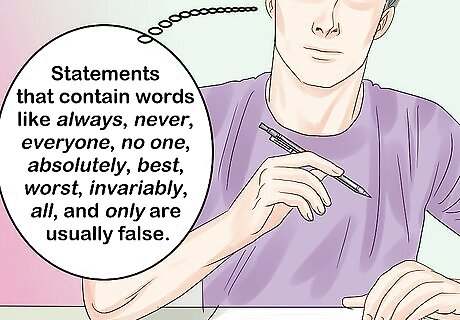
Be wary of answers containing extreme modifiers. Statements that contain words like always, never, everyone, no one, absolutely, best, worst, invariably, all, and only are usually false.
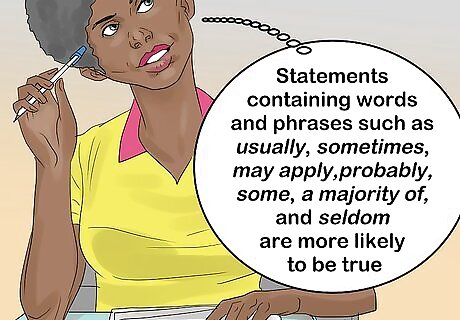
Favor answers that use qualifying words. Statements containing words and phrases such as usually, sometimes, may apply, probably, some, a majority of, and seldom are more likely to be true than false.
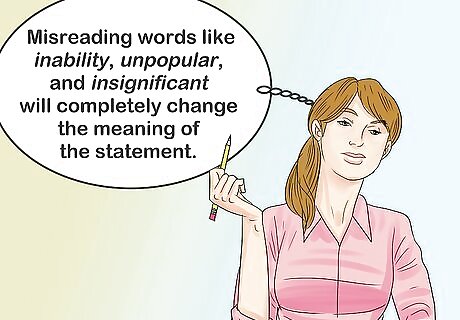
Look out for double negatives, and negative prefixes. Read through the statements very carefully, paying attention to words that employ a negative prefix – for example, inability, unpopular, and insignificant. Misreading these words will completely change the meaning of the statement. A statement that describes something as not uncommon is actually saying the event is common.
Reading Comprehension Questions
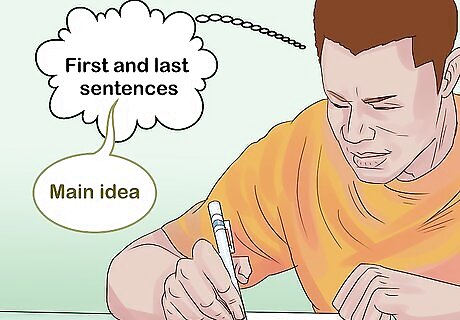
Look at the first and last sentences, for the main idea. If you are asked to identify the author's “purpose,” “intent” or “main idea,” try looking closely at the first sentences and the last sentences. If they seem to closely relate to each other, this is a good indication of the main idea the writer was trying to get across. Main idea questions usually contain words and phrases, such as emphasizes, focuses on, is primarily concerned with, or the essence.
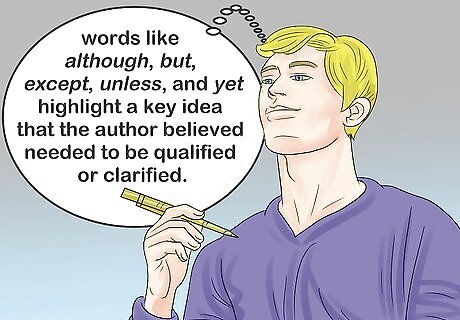
Take notes to find the main idea. Note key words as you read, and pay attention to words or concepts that are mentioned more than once, or in great detail. Also look for words like although, but, except, unless, and yet, because these words highlight a key idea that the author believed needed to be qualified or clarified. A good strategy to help with questions like these is to note down 1-3 words summarizing the main idea of each paragraph in the margins as you read. Then, when you answer a question on the main idea, you can refer to these notes instead of doing a lot of re-reading.
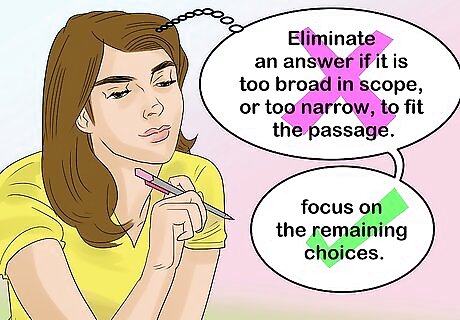
Eliminate answers that are too broad or too narrow in scope. Certain answers you can rule out right away, and then focus on the remaining choices. The answer is too broad in scope, or too narrow, to fit the passage. For example, if the reading concerns college students in France, an answer describing all the people of France is too broad. An answer that only pertains to female college students in France would be too narrow.
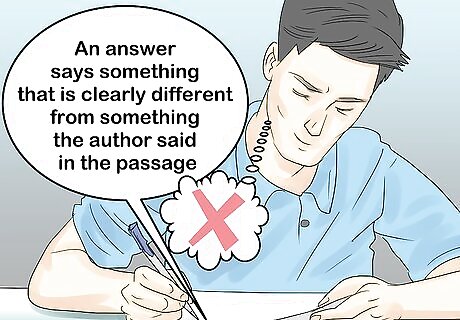
Eliminate answers that contradict a statement in the reading. If an answer says something that is clearly different from something the author said in the passage, you can rule that one out right away.
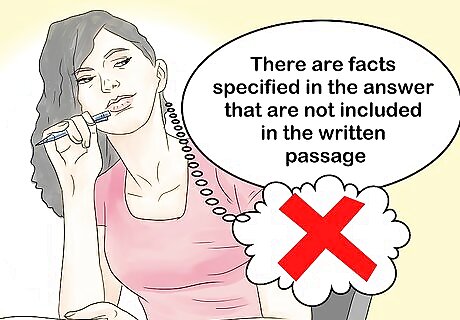
Eliminate answers that aren't supported by the writing. If there are facts specified in the answer that are not included in the written passage, you can rule out this answer as well.
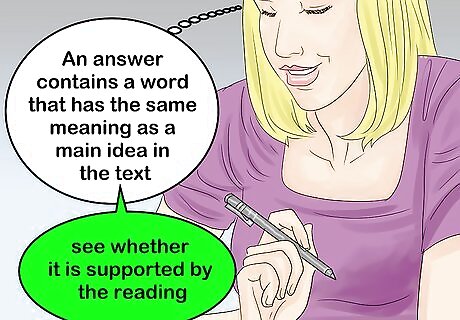
Look for synonyms, when asked for a specific detail. If an answer contains a word that has the same meaning as a main idea in the text, focus on that answer first to see whether it is supported by the reading.











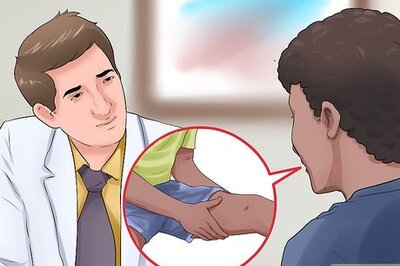
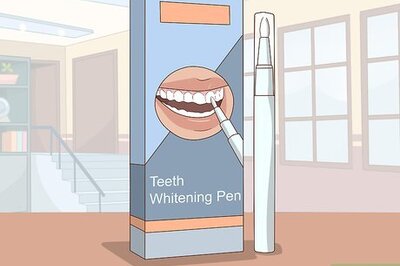
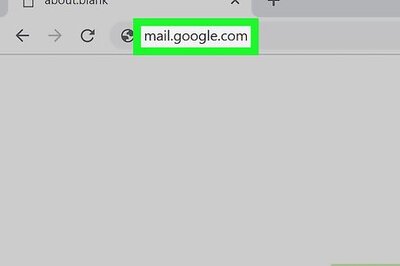

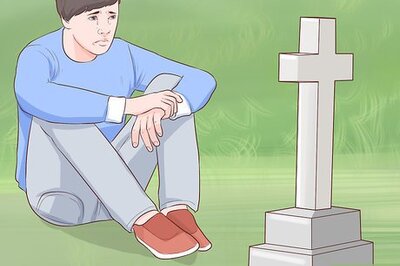
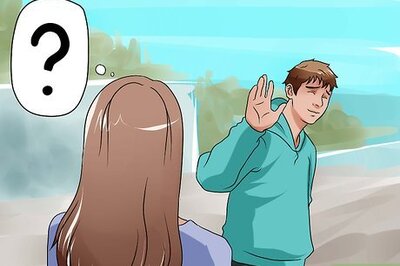
Comments
0 comment